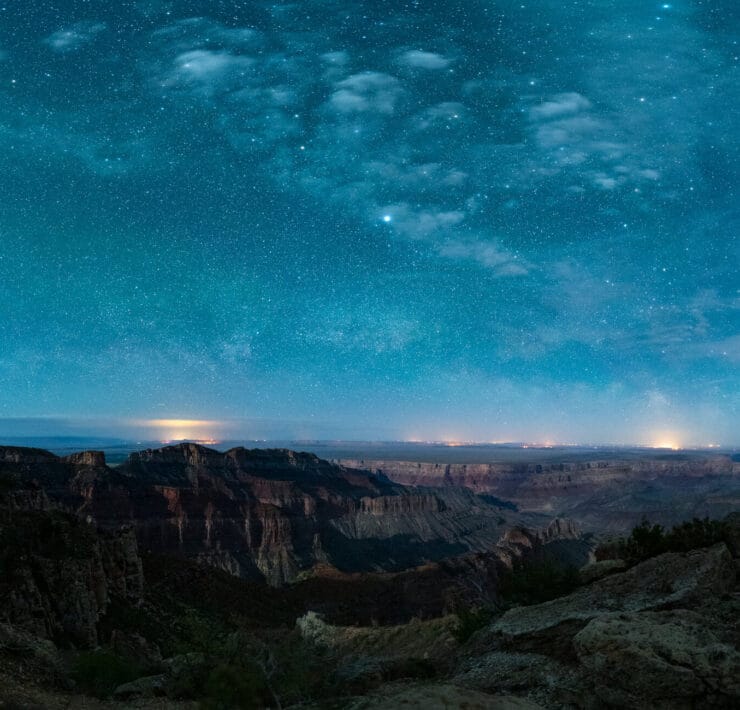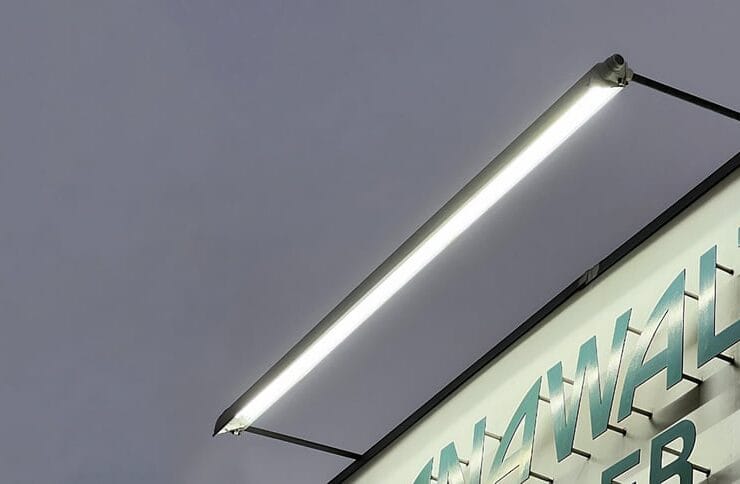The architectural design industry has undergone a radical transformation over the last few years, largely driven by technological advances. Tools, such as computer-aided design (CAD) and 3D printing, have revolutionized the way we approach the design process, particularly in commercial lighting applications.
As digital innovation continues to propel the industry forward, one of the most exciting technologies to appear is extended reality (XR). This clever technology blurs the lines between physical and digital worlds for a process that seamlessly slips between the two, taking architectural lighting projects from conception to completion in an entirely new way.
This isn’t a small shift, either, with the global XR market expected to grow from $46 billion in 2025 to over $75 billion by 2030. It won’t be surprising if, in this time, XR becomes standard technology across architectural lighting design.
Table of contents
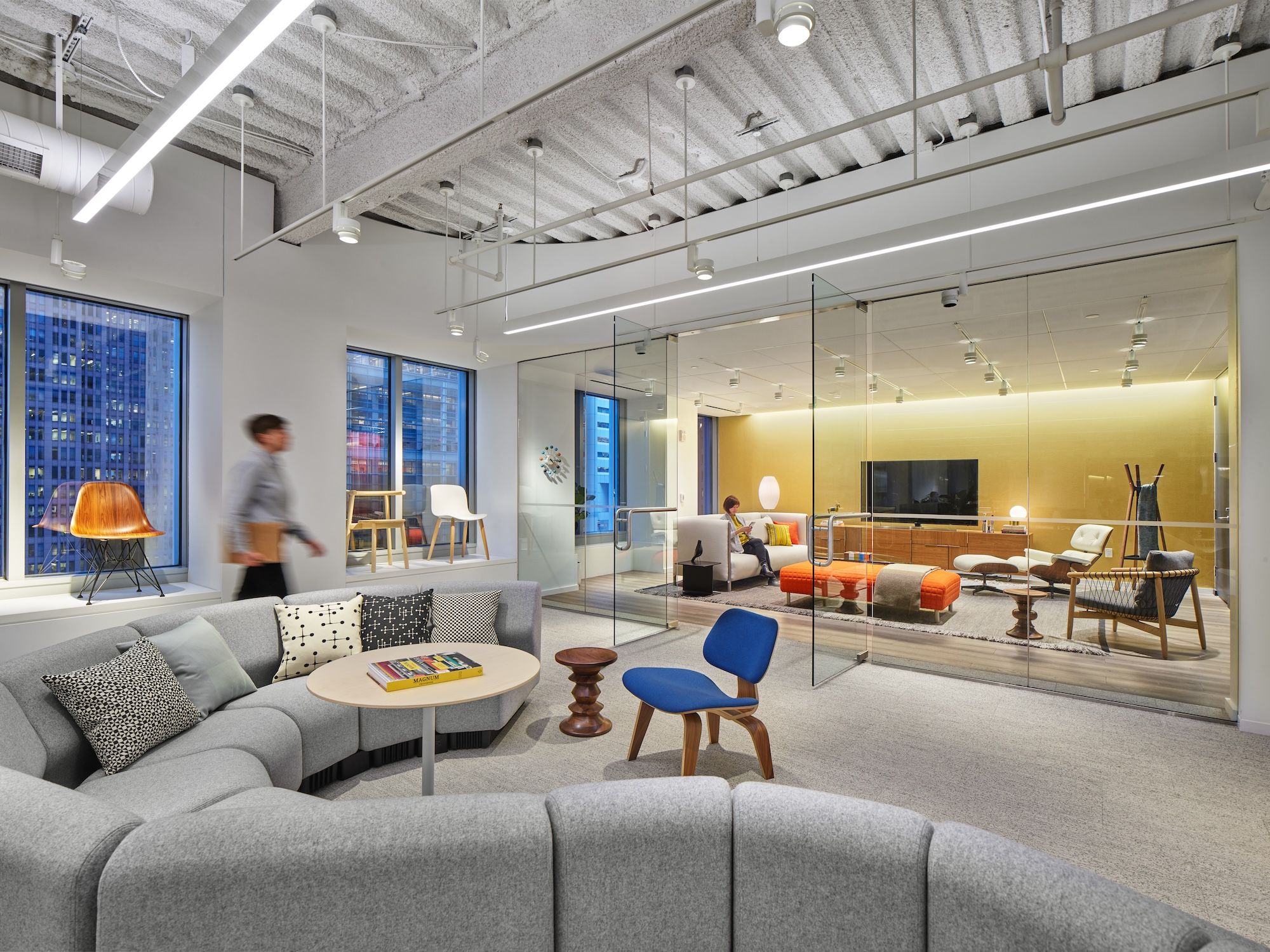
What is XR?
XR is a collection of immersive technologies, each designed to alter how we view the world around us. The umbrella term is currently used to group together:
Virtual reality (VR)
VR immerses users in digital environments, often through the use of a headset. You’re able to navigate and interact with the space, using physical movements, such as turning your head or raising your arm, to manipulate the digital world. The latest tech also works with other senses, such as smell and touch, to create more realistic experiences.
Augmented reality (AR)
AR places digital images over the real world. By holding up a camera, you can add elements, such as outdoor lighting fixtures, to see how they’d alter or suit the environment. For instance, in an office retrofit, you might use AR to test which color light bulb best complements your existing color palette.
Mixed reality (MR)
Similar to AR, MR overlays digital elements within a real space. When viewed through a camera, though, the digital and real elements can interact with each other, creating a deeper blend of the two that surpasses AR.
XR in architectural lighting design
From VR to MR, this technology has become a force for creativity, communication and collaboration. It allows architectural lighting designers to visualize spaces in immersive 3D, making it easier to experiment with layouts, materials and finishes before construction begins.
VR, for instance, is often used to build immersive mock-ups of designs, enabling designers to digitally walk through their lighting plan before it’s brought to life. AR and MR enable designers to experiment with existing commercial spaces, testing ideas and plans to see potential outcomes before they happen.
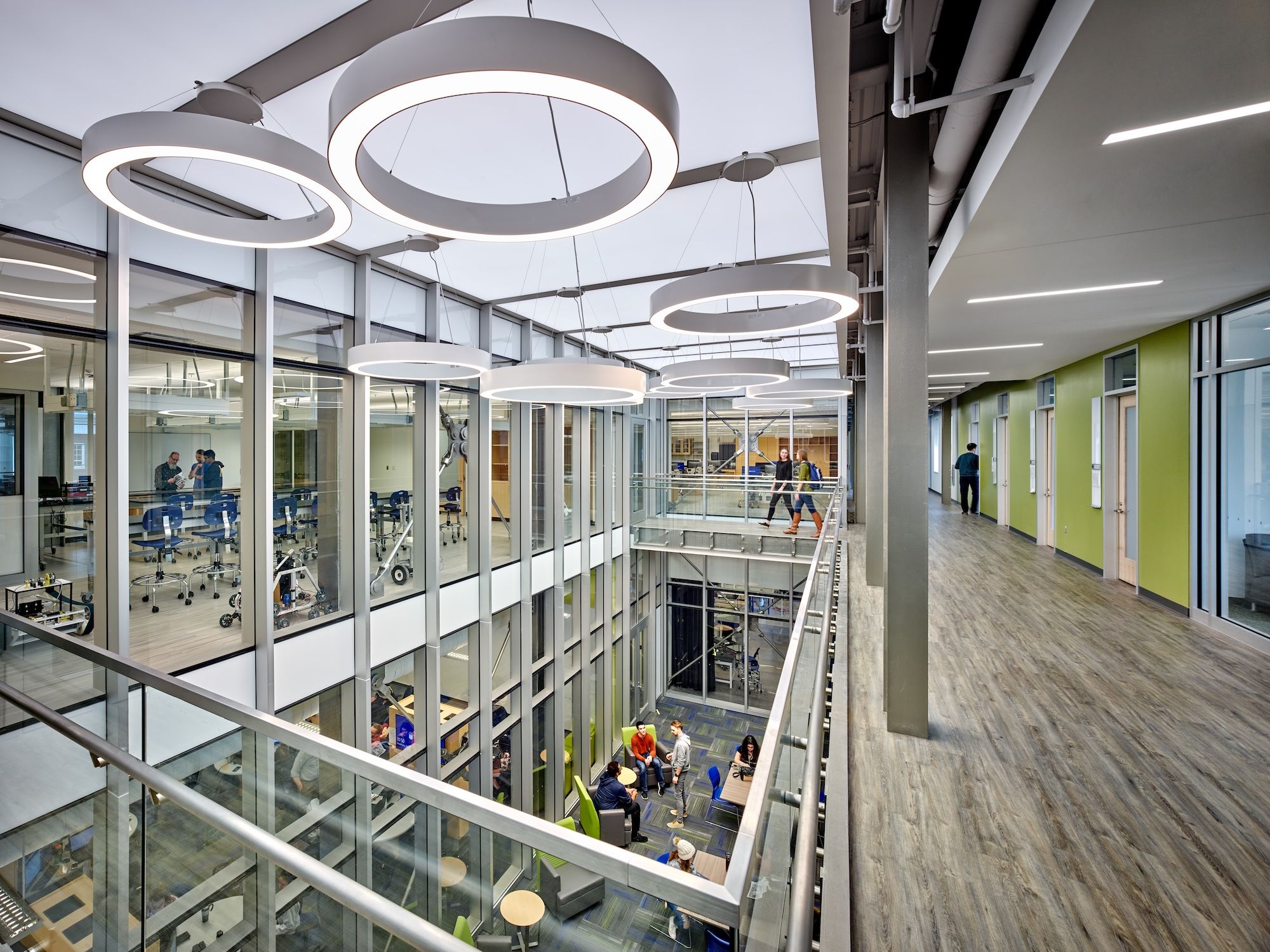
It gives designers more freedom to experiment in different environments while making their vision easier to share. From moodboarding initial concepts to delivering client plans, XR brings benefits to every step of the architectural lighting design process.
XR uses in architectural lighting
There are numerous use cases of XR in commercial architectural lighting. To learn more about why this is such a transformative technology in the industry, here is a look at some of the most impactful applications.
Blending daylight and artificial lighting
Architectural lighting is as much about making use of natural light as it is about artificial lighting, but blending the two is notoriously tricky.
In commercial spaces, well-lit rooms are essential for productivity, brand image and customer experience. That means architects must work with all sources of light for a well-rounded setup that achieves the client’s goals.
Using XR, architects can better understand how light moves through an existing environment. MR, for instance, simulates how natural light changes throughout the day (adjusting for seasonal differences) and highlights dark spots where additional lighting is crucial.
Architects also use XR to explore how small changes can impact their overall lighting. A floor lamp may cast a shadow on the wall next to it when light enters through the window, for instance, or an overhead light might spill into an area the client wants dimly lit. By testing concepts in a realistic environment, designers can spot issues early on to avoid client disappointment down the line.
Understanding light and wellbeing
Light is closely linked to physical and mental well-being. The types of light people see and how long they see them for affect everything from sleep to anxiety. In a commercial space, architects must demonstrate an understanding of the connections between light and wellbeing to create hubs of happy customers and employees.

XR tools enable designers to visualize human-centric lighting strategies in real-time. They can simulate commercial lighting plans that align with the circadian rhythm or boost productivity, for instance, creating cycles that shift from day to night. Not only is this helpful for encouraging more conscious design, but it also proves to the client that the designer has considered wellbeing in their plans.
Importantly, XR makes the idea of wellbeing within architectural lighting tangible. Instead of relying solely on technical specifications, clients can experience the emotional and physiological impact of light within a virtual environment to better understand the decision-making behind the end result.
Designing for accessibility
Under the Americans with Disabilities Act and Accessibility Standards Canada, commercial buildings must be accessible for people with disabilities. This includes lighting, making it vital that architects create systems that champion accessibility.
XR makes accessible design easier by giving architects the ability to view spaces from different points of view. They can navigate a digital twin of their lighting design as a wheelchair user would, for instance, and identify where light switches may be too high on the wall.
It also encourages innovation in accessible lighting systems. By understanding how people with disabilities use a space, architects can explore creative design choices that boost accessibility, such as sensor-enabled lighting and ergonomic switches.
Enhancing client collaboration
Lighting is meant to be dynamic, changing throughout the day to suit different moods and purposes. Without walking through a completed space, architects may struggle to convey their vision effectively. XR, however, creates plans that are dynamic and changeable, too, bringing more clarity to blueprints.
Architects can send simulations of different lighting set-ups to clients, allowing them to see a more well-rounded mock-up of the final vision. This improves communication, which, in turn, boosts customer satisfaction.
XR also improves collaboration between designers, builders and other team members. By being able to overlay elements on existing spaces, there’s little room for confusion and more confidence in the vision. There’s no need for lengthy conversations and little room for error, with detailed, realistic digital twins making communication simple.
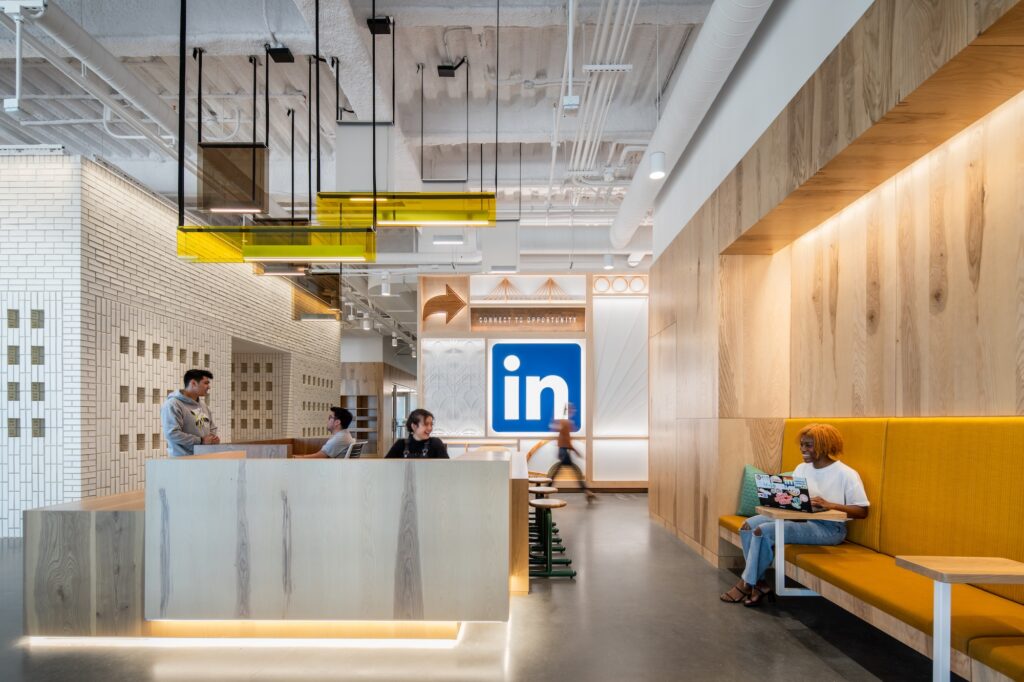
Final thoughts
XR is far more than a gimmick. This software has the potential to revolutionize the architectural lighting design process, encouraging more conscious thinking around how different elements can affect the final setup.
From simulating changing daylight throughout the seasons to testing unique concepts with the client, it’s no surprise that the XR market is enjoying lucrative projections.
Kelly Edwards is an interior design specialist, television personality, and writer with over ten years of experience in the design industry. She has appeared on HGTV, the Style Network, OWN, and AWE, known for her work on Design on a Dime, Find Me a Luxury Home and HGTV’s Backed by the Bros with the Property Brothers. Her design expertise has been featured in Forbes, Cosmopolitan, Good Housekeeping and Better Homes and Gardens. Kelly is the author of Design Cookbook: Recipes for a Stylish Home and writes about interior design and creative strategy for Insights.



